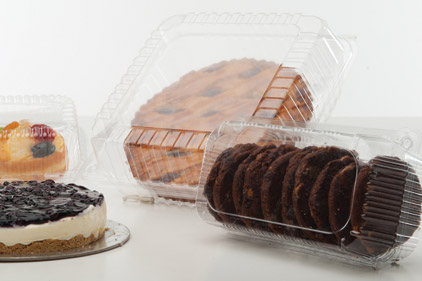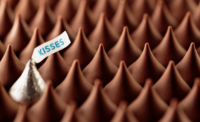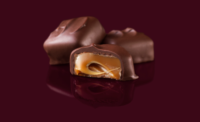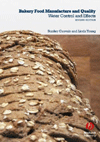This look back into 30 years of packaging innovations shows how far certain packaging structures, trends and conveniences have come and examines the many features that consumers love.
Pouches for sauces and soups
Pouches have been booming for years for items like drinks, baby food and even wine, but a fairly new use for pouches that is really trending is holding sauces and soups. Consumers can find pouches of sauces and soups amongst the traditional soup cans and glass sauce jars that once reigned in this segment. The pouches sure stand out on shelves, as they deliver high impact graphics and design details. Sauces and soups packaged in pouches are lighter, easy to handle and shatter-proof for the consumer. The pouch will remain a staple in most households for all types of products.
Resealability in beverages: aluminum bottles
Resealability is a hot trend right now with both food and beverages. Several packaged items are coming out in new easy to close formats. Snacks are often packaged with a zippered top or reseal tab, and now this trend is really hitting the beverage market. One format that I keep seeing is aluminum bottles with screw on and off caps for use with beer and other beverages, including energy drinks and lemonade. Resealability in beverages is here to stay—it allows the consumer to enjoy some now and enjoy some later, in a splash-proof and spill-proof package.
Cartons for wine
Cartons are traditionally looked at as being used for packaging milk, and while that is still the case, wines have made an entry into the carton playing field. Now more than ever wine is being packaged in alternative packaging formats—it isn’t just glass holding our favorite reds and whites. There are PET applications and pouches, but the carton is really unique. The wines appear more approachable and stand out on shelves with full package designs and colors. The cartons are available in a variety of sizes for entertaining or enjoying alone or with a friend. Cartons are shatter proof and lightweight and perfect for picnicking where glass may be prohibited.
Single-serve portions
Portion-controlled meals, drinks and snacks have boomed over the last decade. From 100-calorie packs to 187 ml wines, single serving cheese portions, snacks and soups, this trend is here to stay. The smaller sizes make snacking easy on the go, as is the case with the Cheez-Its package that fits into your car’s cup holder. The single-serve portions are not just for snacking, but are popping up for a single meal, a single glass of wine and even a single cup of soup. Nibbling is a very popular trend, with more Americans snacking throughout the day. The single serve portions of favorite foods make it easy to sneak more in between meals.
Coffee cup sleeve
You wouldn’t think that your coffee cup needed to be kept warmer, but that’s not what the coffee sleeve does. It keeps your paper coffee cup from getting your fingers too warm. The sleeve, which originally was called the Java Jacket, was invented in 1991 by Jay Sorensen (one reference has 1993), who spilled coffee in his lap from a cup too hot to handle. Today they are ubiquitous from Starbucks to the local carryout bistro. The sleeve is made of textured paperboard and International Paper is one of the largest manufacturers.
Microwaveable trays
Frozen meals—or “instafood” as they’re known around our house—have come a long way since the Swanson TV dinners of the 1950s. Today the aluminum tray (which some reports say was designed to mimic the shape of a television set) has been replaced by plastic, and in some cases, paper. Most microwave trays are made from PET or CPET and many can be used either in the microwave or oven. Some are made from ovenable paper. Sugarcane is being used in the molded pulp by some suppliers.
Lightweighting and downsizing
Back in the 1980s I was writing for a newspaper about how food companies were ripping off the consumer by subtly reducing the number of ounces in their containers. A “pound” of coffee became 13 oz. The trend has continued, driven by costs, transporting efficiencies and economics. As costs rise, food companies need to ensure their profit margin doesn’t slip, so they pack less product into the package for the same price.
Some packages are getting smaller as well. The ability to pack more containers on a pallet saves money in transportation costs.
Finally there is using less material. Amazon made headlines with its move to pressure suppliers to use less packaging in their products. Amazon is positioning this as a win for the consumer since less material promotes sustainability. But it also enables the online seller to pack more product on warehouse shelves and into its boxes.
All-natural
For many years the phrase “natural” was seen on many packaged foods—even though the list of ingredients contained some very unnatural additives. But the word has gone out of favor, in part because of pressure from consumer groups and lawsuits. Ben & Jerry’s, PepsiCo and Campbell Soup have phased out “all-natural” from some of their products.
The U.S. Food and Drug Administration (USDA) has not developed a definition for use of the term natural and says: “It is difficult to define a food product that is ‘natural’ because the food has probably been processed and is no longer a product of the earth.” It does object to the term if the food contains added color, artificial flavors or synthetic substances. Meanwhile the debate rages over whether GMO foods can carry the natural label.
Convenient condiment packaging
In 2010, Heinz announced the Dip & Squeeze ketchup packet, starting a media frenzy. The Dip & Squeeze packet solved the problems of its traditional counterparts by being easy to open and eliminating the need for a separate container for dipping. The packets allowed consumers to either the tip to squeeze ketchup onto food or to peel away the top to dunk food into the ketchup. In 2013, Wholly Guacamole took a cue from Heinz and released a redesigned snack cup for their 100-calorie packs. The previous packs had functioned much like traditional ketchup packs and could be squeezed onto food, which made guacamole a more convenient condiment, but it didn’t serve the traditional method of munching—dipping. This new package makes Wholly Guacamole more portable and easier for consumers to eat on the go.
Beverage pouches
Anyone who had children or was themselves a child in or after 1981 knows that drinking from a pouch isn’t weird at all because drinking a Capri Sun was and is a perfectly normal childhood behavior. Beverage packagers want to move that mindset beyond grade school as pouches begin to pour into other areas of the beverage market. In 2012, House Band Wines launched the first single-serve 275ml wine pouch targeted at music festivals where glass packaging is often prohibited. Also targeted at active consumers, Chilling Rocks natural spring water comes in a stand-up pouch that features a no-drip spout that prevents spills even with the cap off. These pouches take up less space than plastic bottles, do not require labels and offer a lightweight beverage option for on-the-go consumers.
Foodservice forgoes polystyrene
In 1990, McDonald’s discontinued the use of expanded polystyrene (EPS) for their clamshell packaging. EPS has long been under scrutiny for its negative environmental impact. Head to page 21 to read a clipping from Packaging Strategies in 1990 about it. When the fast food giant moved away from the material for food, others followed suit. By 2011, headlines were proclaiming the potential local government bans of polystyrene in carry out food containers. In 2013, McDonald’s again made a step toward sustainability by replacing their polystyrene hot beverage cups with a paper version in all 14,000 US outlets. Recently, former New York City mayor, Michael Bloomberg, led a campaign to ban the foam cups, plates and food containers in restaurants throughout the city. If the trend continues, polystyrene won’t be on any menu much longer.
Shelf stable foods to go
Another trend marketed to an on-the-go lifestyle, shelf stable packages for ready-to-eat foods continue to grow. Consumers need snacks and meals that fit into busy lifestyles. This means the food cannot require refrigeration or heating. Moving beyond granola and protein bars, Go Picnic snack meals combine five cross-brand snacks in a convenient, easy to transport box the size of a paperback book. The shelf-stable snacks can be eaten together as a meal or throughout the day depending on the consumer’s preferences. Similarly, tapaz2go offers a mini-meal snack of hummus and crackers that doesn’t require refrigeration. The box opens up and allows the consumer to pop the hummus bowl into the box to create a serving tray, offering more convenience for on the go snacking.
Source: Food and Beverage Packaging






